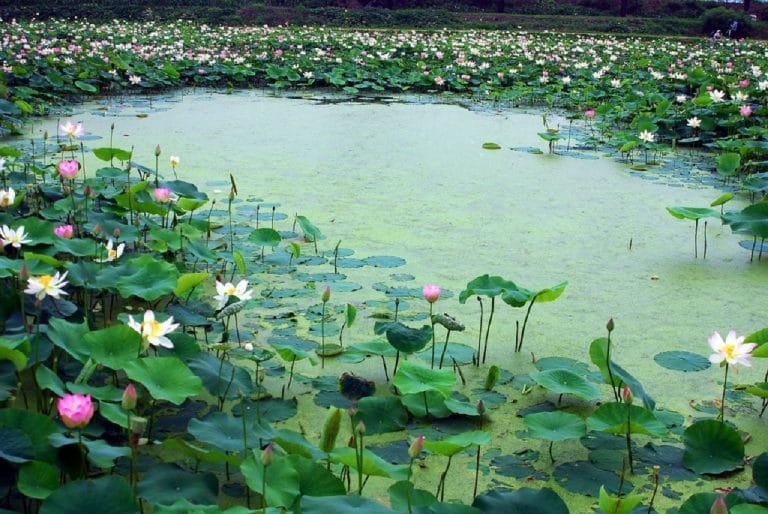There is a Looming Water Crisis in Pakistan. Pakistan has encountered numerous political and economic obstacles since its independence in 1947. One of Pakistan’s biggest and long-term challenges is not extremism or terrorism but rather the lethal mix of climate change and a rapidly growing population. On the one hand, scarcity, then on the other, monsoon flash floods have an impact on water resources.
During the Sindh floods of August 2019, the urban regions of Hyderabad and Karachi were severely affected. According to news sources, more than ten individuals perished in Karachi, with others electrocuted due to a damaged electricity supply infrastructure. These disasters demonstrate that Pakistan is not a water-scarce nation but a nation with inadequate water resource management and distribution systems.
The Friedrich Naumann Foundation for Freedom (FNF), Pakistan, has collaborated with Karachi-based Shehri- Citizens for a Better Environment to assist local organizations in understanding resource governance concerns (Shehri-CBE). Since the 1980s, when almost nobody discussed climate change or environmental issues, Shehri-CBE activists have advocated for protecting green and public areas in the greater Karachi region and the Indus delta.
Pakistan’s Water Dependency
Pakistan’s water supply is almost entirely dependent on Indus Basin flows and precipitation. However, contrary to popular belief, the actual water supply has not diminished. Instead, it is the booming population responsible for the increasing water demand. According to recently published World Bank data, Pakistan’s population grew by 2.1% in 2018, while India’s and Bangladesh’s population grew by only 1% and 1.1%, respectively, over the same year. This makes Pakistan the South Asian nation with the fastest population growth. This difficulty is exacerbated by distribution, infrastructure, and use of water issues.
Due to obsolete and inefficient irrigation techniques, ninety percent of Pakistan’s water is used for agriculture. Traditional flood irrigation wastes a great deal of water through evaporation and degrades soil quality over time. The British constructed Pakistan’s irrigation network during the colonial period. Since then, the irrigation system has not been appropriately maintained or updated. Inefficient canal and pipe systems waste between 40 and 50 percent of the water supply. Infrastructure and old irrigation techniques must be modernized immediately.
Magnitude of Water Crisis in Pakistan
A few significant facts illustrate the magnitude of the crisis:
- Approximately 92% of Pakistan is classed as semi-arid or desert, and the great majority of Pakistanis rely on surface and groundwater sources from a single source: the Indus River basin.
- Since Pakistan’s independence in 1947, its population has quadrupled; by 2100, it will have expanded by a factor of ten.
- Approximately ninety percent of the nation’s agricultural output is produced on land irrigated by the Indus Basin Irrigation System (Qureshi, 2011), tying the nation’s food security inextricably to the water levels in the Indus River basin.
- Pakistan’s water storage capacity is limited to a maximum 30-day supply, far less than the 1,000-day storage capacity recommended for a country with its climate.
Are Dams a Solution?
Infrastructure projects involving water have also suffered a similar fate. The mega dam projects Mangala, Talaba, and Kalabagh in Punjab were financed by the World Bank to fulfill Pakistan’s expanding electricity and water needs. Instead, they have made matters worse for the southern state of Sindh, whose residents now receive less water than they require. In addition, the fertile sediments, which are necessary as agricultural fertilizers, are trapped in northern reservoirs, and the soil quality degrades over time. Due to the low water levels in the Indus, water from the Arabian Sea floods and destroys the mangroves of the Indus delta. The global rise in sea level expedited this process. Therefore, it is not unexpected that water is a crucial source of contention between Punjab and Sindh, two neighboring provinces. Shehri-CBE is very concerned about the low water levels of the Indus River and the intrusion of saltwater into mangroves. They have participated in replanting projects to save the mangroves.
National Water Policy framework
In 2010, the eighteenth amendment to the Pakistani constitution was ratified, which exacerbated governance and coordination challenges across different ministries due to a lack of forethought. The amendment intended to devolve power. However, this well-meaning strategy resulted in duplicate structures and ambiguous responsibilities at all levels of the Pakistani government. Different entities are responsible for drinking water, sanitation, irrigation, and urban water management, making cooperation extremely challenging. In 2018, the Ministry of Water Resources published a National Water Policy framework that identified no less than fourteen different authorities or public programs involved in water management that required some form of consolidation.
All of the concerns mentioned above illustrate Pakistan’s resource management issues. Moreover, the ever-increasing threat of climatic disasters has now compounded these problems. Prime Minister Khan’s recent declaration of a strategy to save the rivers is highly appropriate. The rivers are Pakistan’s lifeline, which must be protected by whatever means possible.
Water Wars in South Asia
The water issue is not limited to Pakistan but affects all of South Asia and could be a significant source of conflict. Since the Indus River system originates in the Himalayas, the survival of Pakistan and broad regions of India rests on the political abilities of India, Pakistan, and Afghanistan to reach new regional accords on water distribution. In addition, the contested territory of Kashmir contains significant water reserves for South Asia.
According to researchers and water experts, the Indus Waters Treaty of 1960 was a landmark for a mutually beneficial agreement on water sharing, which requires immediate revision. South Asia’s future depends on the equitable distribution of regional water resources and confidence in its implementation. However, the region’s present political tensions make it unlikely to occur very soon.
Read about Pakistan issues heat wave alert.
Pakistan faces a water issue and grave concerns regarding its future food security, as the amount of water available per person decreases annually and the demand for food production continues to rise. This predicament has significant ramifications for the government’s ambitions to create a country with an upper middle income by 2025 and ensure long-term peace and stability.








